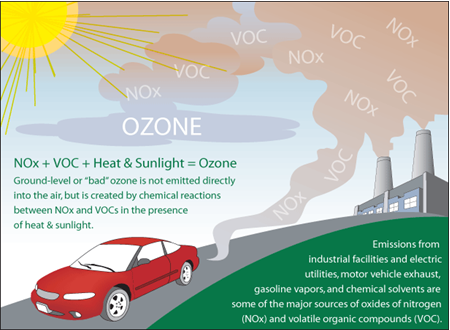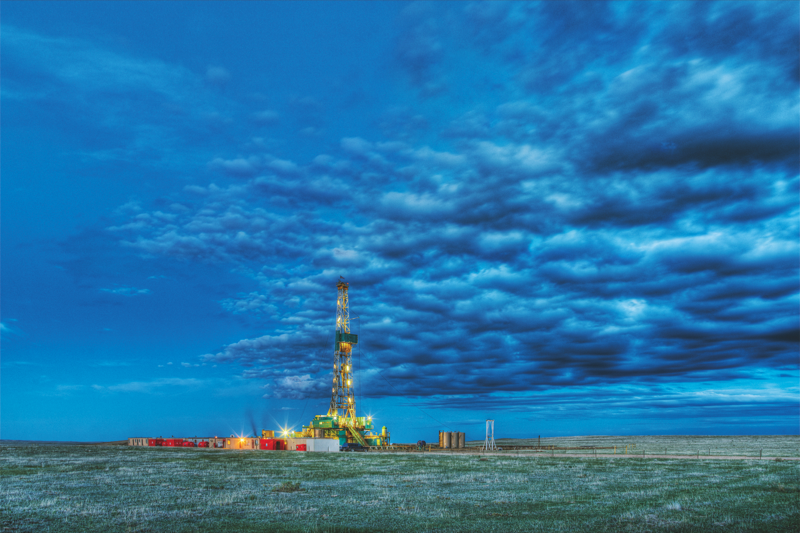As I’ve been following, the Environmental Protection Agency is in the process of updating the national ambient air quality standard for ozone pollution. The standard is likely to be strengthened below the current standard of 75 ppb, due to the compelling scientific evidence linking ozone to adverse health impacts at this concentration. The EPA has proposed a standard between 65 and 70 ppb, narrowing the range advised by its independent science committee of 60-70 ppb, and the agency will issue a final rule by October.
![Houston, Texas--with its sunny skies, hot temperatures and high volume vehicle traffic--is one of many U.S. cities that struggles with meeting the ozone standard. The proposed stronger EPA standard will better protect Houstonians from harmful ozone pollution. Photo: Flickr/Theodore Scott]()
Houston, Texas–with its sunny skies, hot temperatures and high volume vehicle traffic–is one of many U.S. cities that struggles with meeting the ozone standard. The proposed stronger EPA standard will better protect Houstonians from harmful ozone pollution. Photo: Flickr/Theodore Scott
This is an important issue in many cities that already have problems with ozone pollution. Houston, Texas, has struggled to meet the current ozone standard, leaving much of its population exposed to harmful ozone concentrations. Meanwhile, the state also struggles with misinformation about the value of a tightened ozone standard.
To help dispel some myths and share the science of ozone pollution, I sat down with Adrian Shelley, Executive Director of Air Alliance Houston. Our interview, which was originally published in Air Alliance Houston’s weekly newsletter Air Currents, is copied below.
Adrian Shelley: Why is a new ozone standard necessary?
Dr. Gretchen Goldman: A new standard is a long time coming. For several years, scientists have been calling for a stronger ozone standard that better protects public health. Exposure to ozone pollution can cause several adverse health effects, including respiratory ailments, cardiovascular effects, and even death. Ozone exacerbates asthma, resulting in millions of missed school and work days for Americans. More and more, we are seeing these health problems occur even when ozone levels meet the current standard of 75 parts per billion (ppb). We know that this standard is not protective of public health, like the Clean Air Act requires.
AS: The EPA’s own Clean Air Scientific Advisory Committee (CASAC) recommended a standard between 60 and 70 parts per billion. What should the new standard be?
GG: We know the standard needs to be stronger. CASAC recommended the EPA set the standard between 60 and 70 ppb, but the group of scientific experts also noted that a 70-ppb standard might not protect public health with an adequate margin of safety. The scientists found that at 70 ppb of ozone, there is still “substantial scientific evidence of adverse effects … including decrease in lung function, increase in respiratory symptoms, and increase in airway inflammation.” Even though CASAC included 70 ppb in their recommended range, the scientific evidence suggests the standard should be lower. Some studies show that the standard should be 60 ppb in order to better protect public health of vulnerable populations, such as children, the elderly, and people with respiratory diseases.
AS: In Texas, we have heard from our state agency, the Texas Commission on Environmental Quality (TCEQ), that a new standard isn’t necessary. Is this true?
GG: This is untrue. The science and the law tell us that a new standard is absolutely necessary. It’s important to remember the history here. This isn’t new science. Back in 2007, the scientific experts on EPA’s CASAC recommended the ozone standard be set at 60 to 70 ppb. The group made the same recommendation in 2011 and today. The science has only gotten stronger. The Clean Air Act requires that standards be based on public health. Period.
AS: The TCEQ says that Texans are obese, and that it is more important that they go outside and exercise than worry about ozone pollution. Is that true?
GG: Yes and no. If you are a healthy adult, you are probably better off getting outside. Children, the elderly, and individuals with respiratory problems should pay closer attention to air pollution levels. We can all be more conscious of air pollution levels by knowing when harmful ozone days are likely. Check out houstoncleanairnetwork.com or the OzoneMap app for iPhone and Android, and sign up for ozone action days alerts at airnow.gov. It is also important to remember that there are typically only a handful of “bad air days” a year. Breathing high ozone concentrations isn’t something you need to worry about on a daily basis.
AS: What about the TCEQ’s argument that most people spend 90% of their time indoors, so EPA’s models of outdoor ozone pollution exposure are inaccurate?
GG: This argument doesn’t hold any weight. EPA uses lots of different kinds of evidence to assess the link between ozone pollution and health effects in order to ensure we have the best understanding. For example, EPA uses large epidemiologic studies that look at health impacts across entire cities. These studies specifically link outdoor ozone concentrations to health outcomes like asthma attacks, heart attacks, and even death. Science shows that outdoor air pollution affects our health.
AS: The TCEQ also points to an EPA study that shows that deaths in Houston could actually increase as we try to decrease pollution. What is that about?
GG: It is true that the complexity of ozone chemistry can sometimes lead to unexpected results. This is why scientists helping to develop State Implementation Plans to reduce ozone emissions need to evaluate how best to decrease ozone without making other pollutants worse. Ozone needs several ingredients to form: sunlight, nitrogen oxides (NOx), and volatile organic compounds (VOCs). NOx and VOCs are emitted directly from sources like cars and trucks, industrial sources, and some natural sources. In different parts of the country, ozone production is limited by either the amount of NOx or VOCs in the atmosphere. In order to reduce ozone, planners and scientists need to reduce emissions of the limiting compound. Ideally, ozone reduction plans should reduce both NOx and VOCs to ensure that ozone levels decline.
AS: TCEQ’s Chief Toxicologist Dr. Michael Honeycutt claims that this study shows that either lowering the ozone standard is a bad idea, or EPA doesn’t understand ozone science. Is this true?
GG: Let’s talk about the EPA’s understanding of ozone science. Every five years, the agency revisits the state of science on ozone. EPA scientists produce a 1,000+ page document called the Integrated Science Assessment that surveys all current scientific information on ozone and its impacts on human health. To help ensure that the assessment is comprehensive, the agency consults with its Clean Air Scientific Advisory Committee and creates an additional Ozone Review Panel of experts specifically on ozone. Overall, the EPA goes through several stages of scientific and external review to ensure that a high quality of science is informing their decision. If Dr. Honeycutt thinks the EPA doesn’t understand ozone science, I suggest he start reading their 1,251-page Integrated Science Assessment.
AS: So a strategy that reduces both nitrogen oxides and volatile organic compounds would potentially avoid this result. Are there any other benefits?
GG: Sure. Strategies for reducing ozone pollution are likely to have co-benefits. VOCs, for example, are associated with their own adverse health impacts, so by reducing VOCs, more people are protected from the harms of both ozone pollution and VOC pollution. We also can see benefits from having cleaner and more efficient industrial processes. These technologies decrease ozone but can also save energy, save money, and reduce many other harmful pollutants. Look at Corporate Average Fuel Economy (CAFE) standards, for example. These have decreased ozone along with a host of other pollutants and have also results in tremendous gas mileage improvements for Americans.
AS: What can Houstonians do to avoid the harmful effects of ozone pollution?
GG: Pay attention! First and foremost, Houstonians can stay tuned to houstoncleanairnetwork.com to monitor ozone in real time and limit their outdoor activities. To benefit their long-term exposure to ozone, Houstonians can tell decision makers they want an ozone standard that protects public health. The EPA takes public comments on its standards for ozone and other pollutants and Houstonians can always tell their representatives to support a science-based ozone standard that protects public health and follows the advice of EPA’s science advisors. Public support is key.
AS: What can Houstonians do to limit their contribution to ozone pollution?
GG: Driving less is a big one. Consider your commute time when you are choosing a place to live and choose more fuel efficient cars. Because our energy often comes from sources like coal and natural gas that emit air pollutants when burned, energy savings can also go a long way in terms of limiting your contribution to ozone and other air pollution. Get an energy audit, keep thermostats high in the summer and improve home insulation, for example. These things will limit pollution and also save you cash.
AS: Thank you for speaking with me today!
GG: Thanks so much for having me!



































